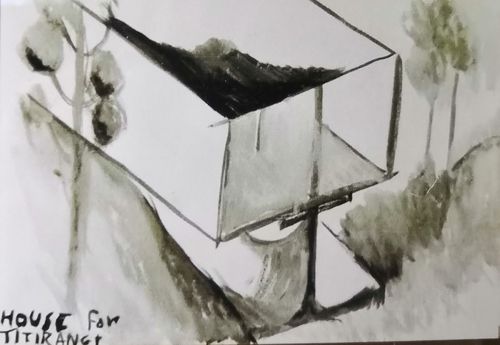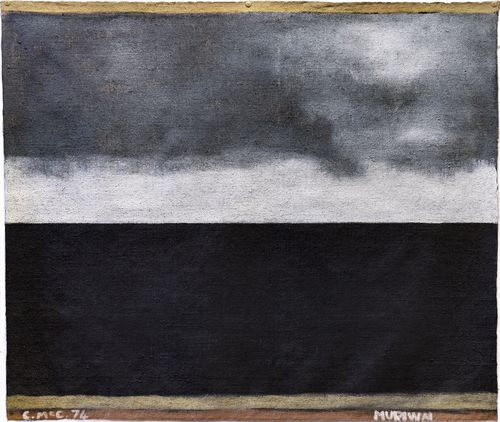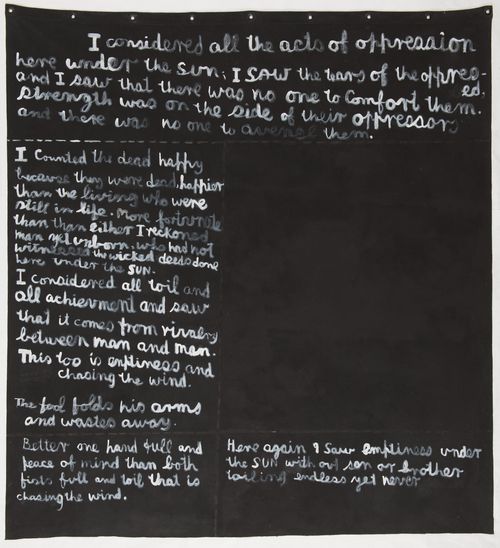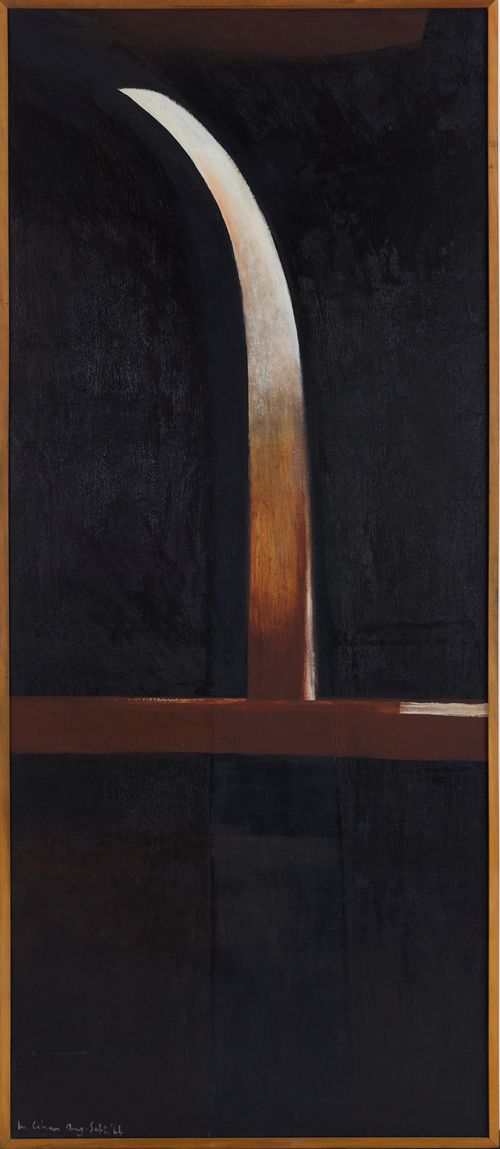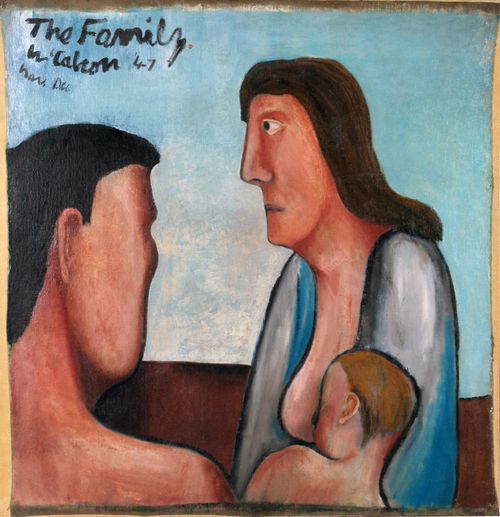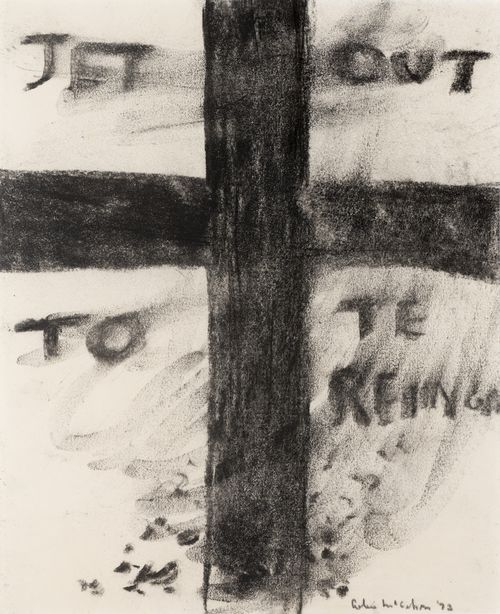Entombment (after Titian)

Entombment (after Titian), 1947, oil on cardboard, 517 x 644 mm. Courtesy Museum of New Zealand Te Papa Tongarewa, Wellington and McCahon Research and Publication Trust

St Michaels Catholic Church, Rotorua 2019. Image courtesy of Cushla Dillon

St Michaels Catholic Church, Rotorua 2019. Image courtesy of Cushla Dillon
Cushla Dillon
Making connection
Spirituality and disturbance, restlessness and melancholy breathe through McCahon’s oeuvre. It resonates with my own sense of displacement and unease, and in that moment I find my ground. McCahon is like a co-conspirator, privy to the shadow self, sending messages from the spiritual darkness below to the land of satiation and excess above. I am a willing disciple.
As I scroll through the catalogue of his work, I rely on an intuitive sense of connection to be my guide. I stop at the painting, Entombment (after Titian) (1947), my attention captured by the colours, characters, narrative, and significantly, the religious iconography. This connection awakes a memory.
In Rotorua, halfway down Pukeroa Hill, sits St Michael’s Catholic Church, overlooking the lake and its figurative heart, Mokoia Island. At the bottom of the hill is the illustrious St Faith’s Church. At the top is Rotorua Hospital, where almost all children born in this area take their first breath outside the womb. Like St Faith’s, St Michael’s interior is a mix of Western religious iconography and the Māori decorative arts of whakairo and tukutuku. As in most Catholic churches, the fourteen Stations of the Cross are represented by paintings that line the walls. The 14 paintings depict the unfolding events of Christ’s last day, starting with his condemnation by Pontius Pilate (1st station), to carrying the cross through the old city (2nd station), and so on to the crucifixion (11th station), death (13th station), and finishing with Christ’s entombment (14th station). The devoted pray at each station on Good Friday, meditating on the journey Christ made through the city of Jerusalem.
I grew up surrounded by the religious iconography of Catholicism, every Saturday (for confession) and every Sunday (for mass). In church, I absorbed the narrative of Christ’s suffering along with the celestial, demonic and historic saints of the Catholic Church’s mythology. It is difficult to explain to anyone who has not grown up with this, how much this moulds one’s psyche. For those of us drawn to the arts, the church is a living storyteller of our identity as Christians (whether active or deactivated), just as (I imagine) the wharenui is to Māori, the mosque to Muslims.
McCahon did not grow up in this world. What was his connection to Catholicism? What ignited his interest? Was it the rebelliousness of Jesus, the radical zealot, the patron of the poor, friend of the dispossessed, diseased and outcast? Jesus who called out the religious hypocrites, only to inspire one of the greatest charades for hypocrisy and heinous humanitarian crimes, the Roman Catholic religion. Or was Christianity a distant shore to pillage for inspiration, the same way Picasso and his ilk sought ideas from Africa or Polynesia, the way Pākehā artists of McCahon’s era plucked shamelessly from Māori?
We connect. Whether as outsiders or insiders. My affiliation with Catholicism was effortlessly discarded as soon as I left home, but when Madonna sang ‘Like a Prayer’, using her Catholic indoctrination and iconography as fodder for her pop songs, I felt like I was in on it. Popular culture expressly seeks connection to exist, whereas fine artists bury and weave their point of entries cryptically into the fabric of their works.
Finding connections is what I do when I am film editing. I must decide on the frames that will connect two moments of time, an indeterminate number of times a day. In order to find these two frames amongst thousands, I search for the connections between the images - be it composition, rhythm, characters, themes, plot, location and genre - so that once these two frames are joined, they transcend their individuality to ‘connect’ the viewer with an emotional response.
For me, to look at a McCahon is to feel connection, and then to question the exact nature of that connection and to understand its mystery.
Now, referring to Entombment (after Titan), I begin to question whether it was the religious iconography that captured my attention. Or was it something else? Something beyond the figures holding the body of Christ? Something that threads through so many of McCahon’s paintings.
Behind the figures are the hills. Those hills. Looming. Majestic. Mine, yours, his, ours. This land. Aotearoa.
